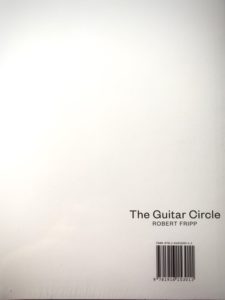Summer Special : Personal Odyssey

August and well into the year. AND, it did turn out to be a full and inauspicious month – as well as the usual delights of the month.
We began with the festival of Lammas, or Loaf Mass Day – Lughnasach – traditionally with acknowledgement of the ‘first stirrings of the Darkness’. And, so it turned out to be: we began the month with 38 degrees Mediterranean sunshine and ended with 14 degrees of wet autumn weather.
I undertook somewhat of personal Odyssey for me.
I was down to do a Conference talk in the West of England. This allowed me to visit places I had not been to for a while – with travelling and then the pandemic.
First, a delightful town near Bath: Bradford-upon-Avon. I used to catch a bus here from my home and walk around its environs :


Some of my favourite buildings: the Old Granary and the Saxon Church – St Lawrence:


The Church dates from circa 1000 (but founded earlier) and was replaced by another church. The old one was then converted into a house/ school – and only then rediscovered as a Church in 1856. It is one of the most complete Saxon churches in the country. The altar – the light around it only appeared in the photo – it was dark inside!!?

The on to Little Solsbury Hill – again, a favorite walking place for me:
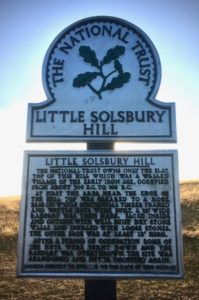


And, yes, made famous by Peter Gabriel:
https://www.youtube.com/watch?v=WeYqJxlSv-Y
Then, on again to Bristol – my home town for much of my childhood. Famous locales: the Clifton Suspension Bridge, the Old Granary, and St Mary Redcliffe Church (a Parish Church but more like a Cathedral).




Another favourite building on mine near St John’s Gate – the old entrance to the city and place of a medieval waterspout. It depicts the history of the printed world. There were crowds in the street when it was first unveiled in the C19.
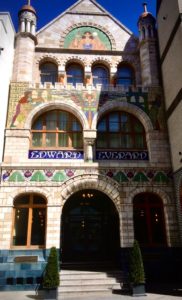
Harbour Area:


Less well known places: Cabot’s Tower – named after the discoverer of America. It used to flash out Bristol in Morse Code.

Park Street, with the Wills Tower of the University at it head. The wealth of Bristol was built on the slave trade from the C17 – C19, then tobacco and aerospace industries. Park Street used to be very sedate with the best, high-class shops located there. Now it is full of take-aways.
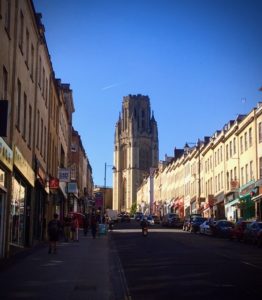
At its foot, the Mauritania – named after the famous ship. Here, it was first a Hotel and hostelry. I remember it as a child for its neon sign, which is still there. It was also the first place I went for a ‘grown up’ meal. In the 1960s, many pubs and restaurants were bought up by Berni Inns, who were the first to offer ‘working’ families a taste of dining away from home cooking. I treated it as sanctuary.

A little later, the Coronation Tap just over from the Clifton Suspension Bridge. Famous for selling traditional Cider – mostly VERY dry and from Somerset.

Also identified at least one urban art piece by that anonymous street artist: Banksy –

Another day, and I visit my home district. This was the result of the new, post-war social project. So, new schools, houses, shops, churches, etc.
This was a very then and now experience for me:
Social housing – now demolished and replaced with private houses.


The Church I attended – now replaced by private houses:

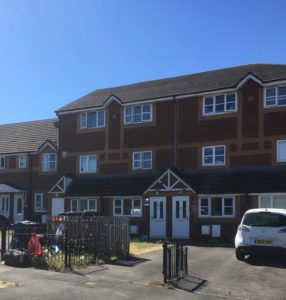
The shops: my mother would buy all her provisions here – there was a post-office, butcher, greengrocer, pharmacy, fish ship, grocer. Now:

The ‘Co-op’ that sold everything for the home: cloths, materials, toys, cleaning. Customers opened an account and received a dividend – money – based on a percentage of what they bought. Hence, ‘co-operative’ – part of the socially minded post war ethos. Now gone. This dividend system was replaced with ‘blue stamps’ – a mimic of the American ‘Green Shield Stamps’.

All the streets were named after painters: Turner, Blake, Cotman, Landseer, Constable. Gainsborough Square sported a lovely pub called the Blue Boy with a mosaic of the Gainsborough painting of the same name. Now:


My home street and the green we played on. Most of the families were of the same generation so there were many children around.

Our home: my bedroom was above the front door – a porch, now a strange construction. My mother kept a lovely front garden, surrounded by hedges. Now:

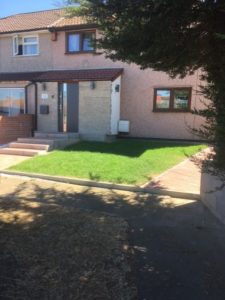
We were surrounded by rough fields where we would play. ‘Up’ the fields and Purdown. Entrances to these place now:
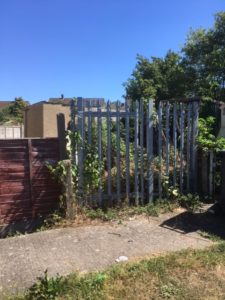


My Primary (Romney Avenue Primary School) school now:

My Infant School has fared a little better. These are still the actual buildings I attended. However, children these days seem to need a lot of protecting:

My secondary School – one of the new Grammar/ Comprehensive School projects:

And, Now:

Our playing sports field:

And, so, on to Glastonbury and the Conference of the Powys Society. My topic was ‘John Cowper Powys and William Blake’. Here is the Powerpoint and Script:
http://www.michaelgrenfell.co.uk/john-cowper-powys-and-william-blake-2022/
GrenfellPowys22PPPdf
A lively weekend – someone commented that they had never had anything like my talk before. I called it ‘an expansive gloss’ since its three main subjects – Powys, Blake and Gnosis – are each extensive topics. So, synthesizing them in 45 mins. is no mean feat. We also walked up on St Michael’s Hill in Montacute the childhood home of the Powys family.

Reading extracts from Powys’ novels that include descriptions of these locales:

Sure was hot – 38 degrees – however, we were rewarded with a handy in a local pub (a mixture of lemonade and beer, for those who do not know)
I call off at Glastonbury for some ‘spiritual’ sustenance at the Chalice Well garden:

Later, Part 2 of the Musica en Moviemiento ‘Introduction to Advanced Practice’ began with an Inaugural Zoom Meeting and Theme presentation:

CD of the month – the latest from William Orbit:

And, book of the month – well, what else:
